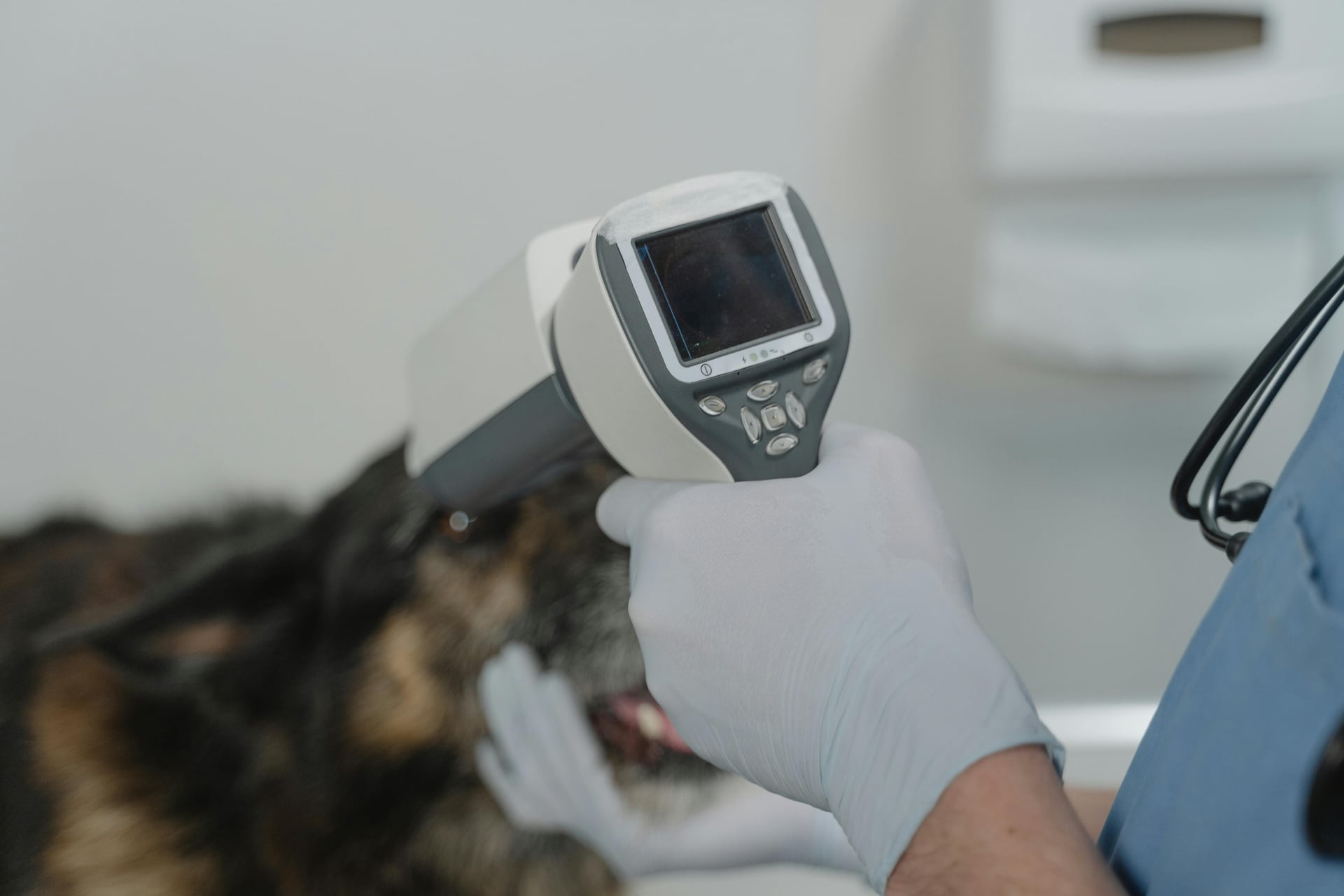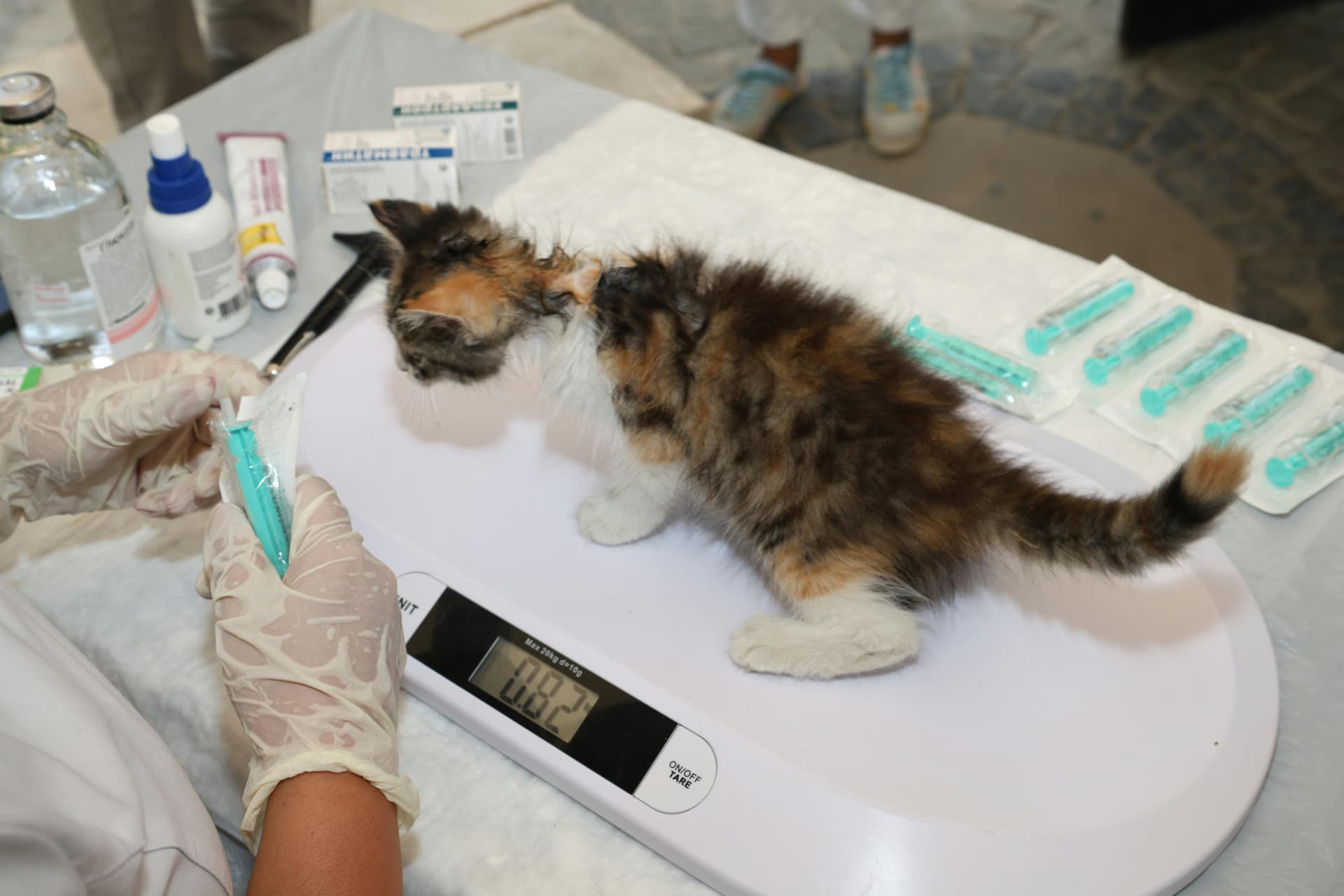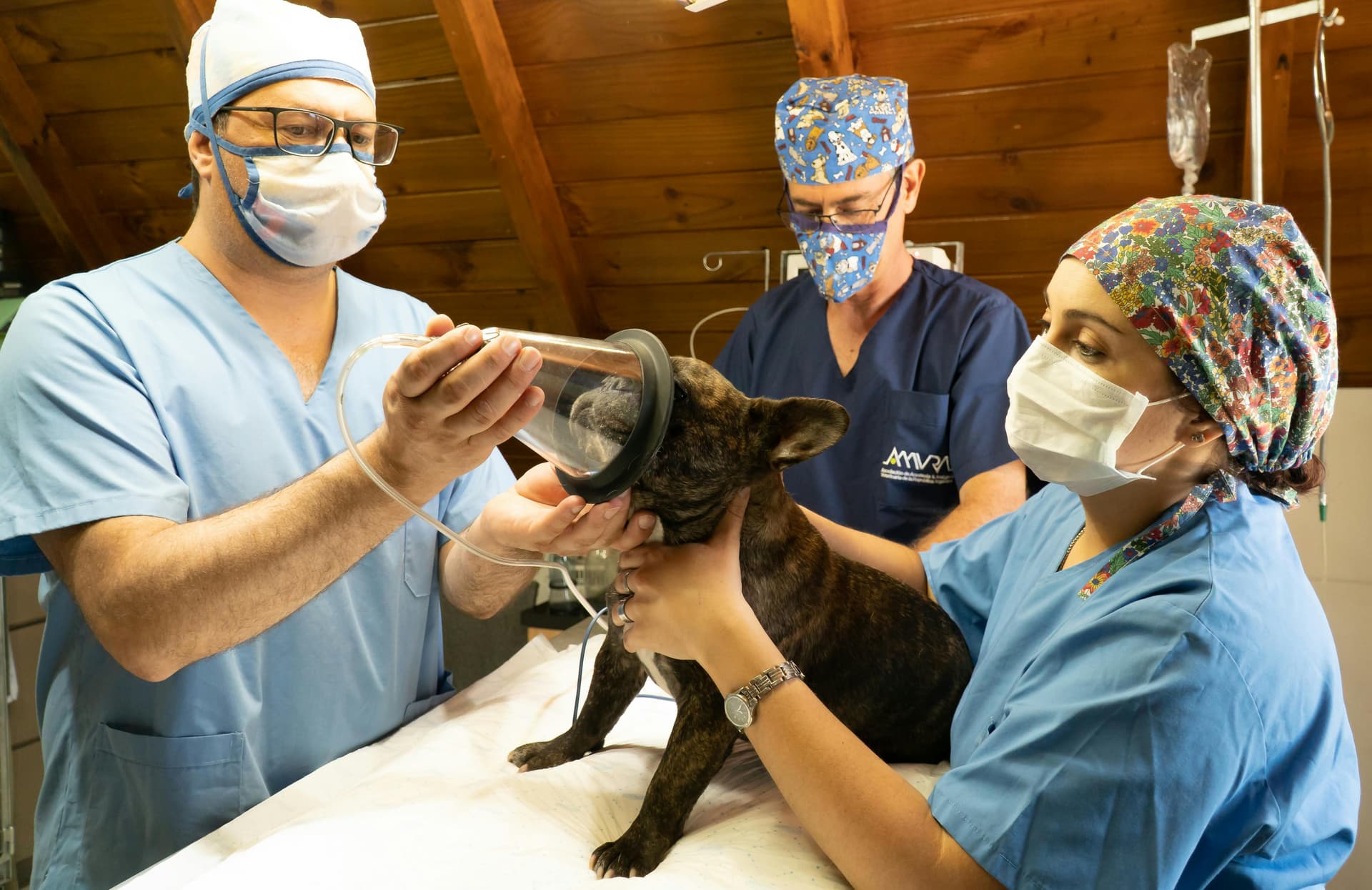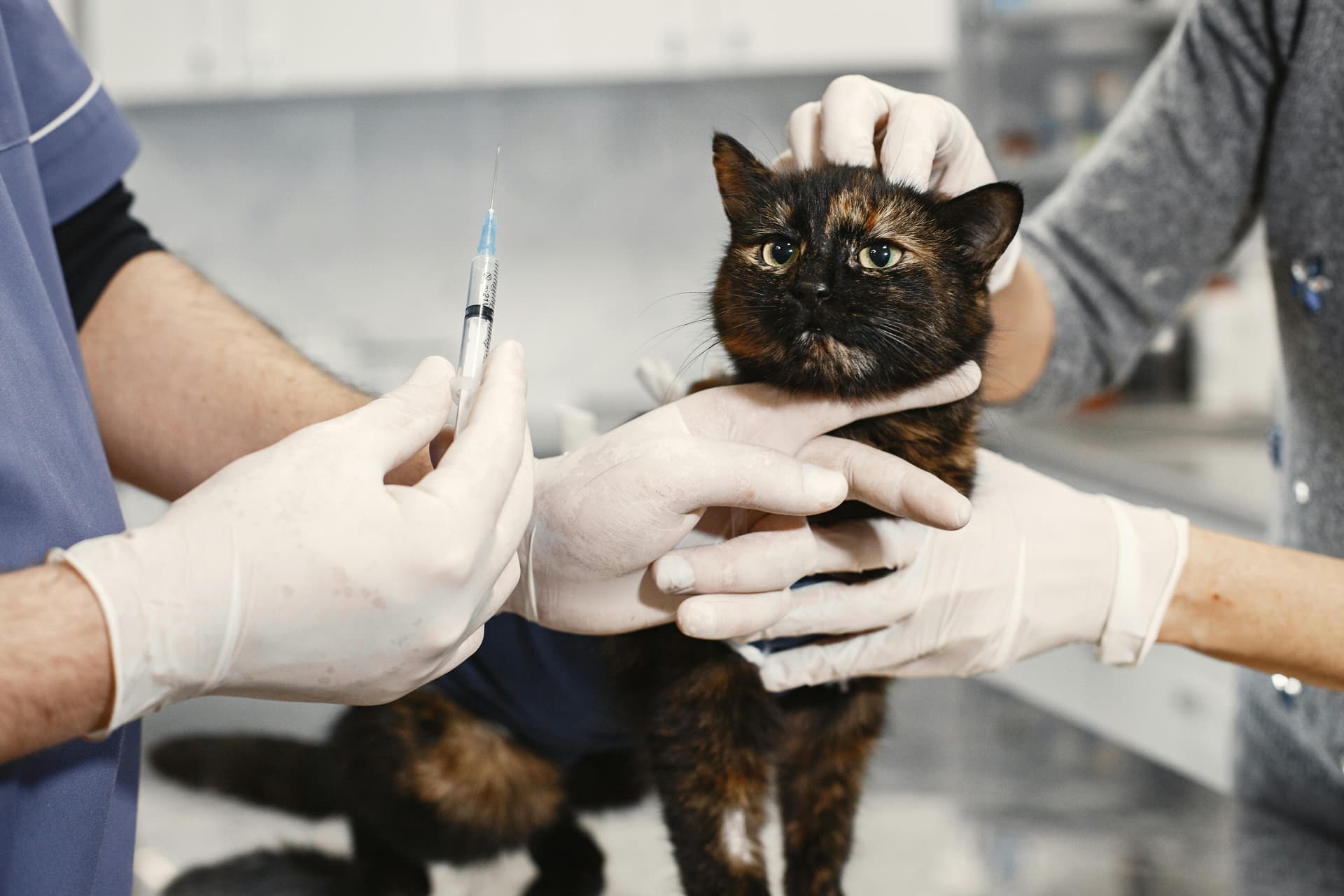You’re at the front desk, hands shaking. The vet says “we need to move fast,” and slides a $6,800 estimate across the counter. Your pet’s looking at you. You’re doing math, not medicine.
That moment is why we built PetCoverage.ai. We help you avoid the “I can’t afford it” pause by finding the holes before they hurt, free policy reviews, side-by-side plan comparisons, and plain-English guidance on what your plan actually pays for. We don’t just shop the cheapest premium; we stress-test your coverage against real emergencies and long-term illnesses so you can say “yes” to care with a steady voice.
If you’ve ever wondered what does pet insurance cover, and more importantly, what it doesn’t, this guide is for you.
The Gut-Punch No One Warns You About
Let’s lead with heart, not fine print. When something scary happens, you don’t want to weigh your love against your bank account. But that’s exactly what happens when your policy has hidden exclusions.
At PetCoverage.ai, we see the same story each week: owners discover (in the ER) that their plan doesn’t cover exam fees, or caps cancer treatments, or won’t pay for a second cruciate tear because the first one happened last year. It’s brutal, and avoidable.
A few fast truths (and why they matter emotionally):
Sticker shock is predictable. According to NAPHIA’s 2025 State of the Industry report, pet insurance premiums rose 21.4%, and claims increased 23.6% year-over-year, signaling that average veterinary emergencies have become significantly more costly, making the “average emergency” far from average.
One bad day = years of premiums. A single obstruction surgery ($3,000–$7,000+) or ACL repair ($2,300–$5,000+) can wipe out savings if your coverage is thin.
Coverage clarity = calm. When you know exactly what your plan pays, you make decisions faster and better.
Nervous your policy won’t hold? Upload it for a free gap check at PetCoverage.ai. Get clear in minutes.
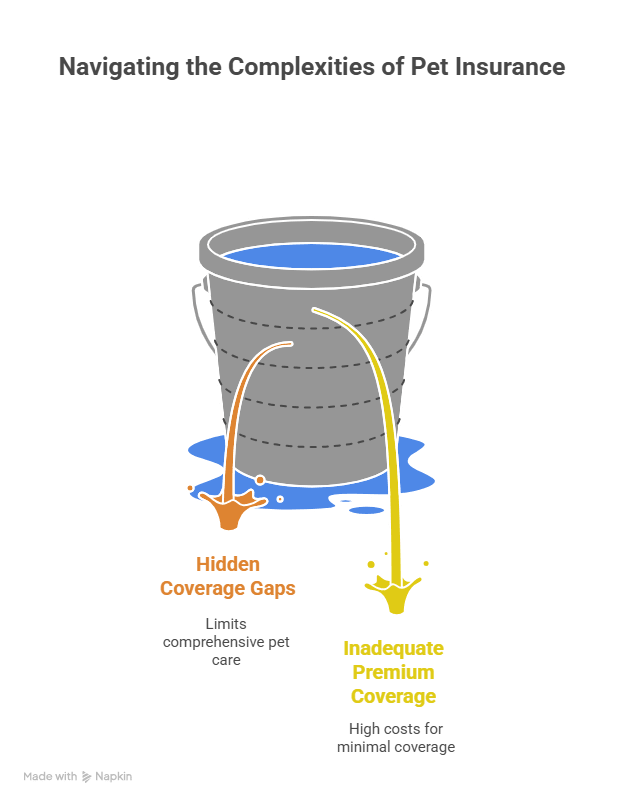
Read This First: The 7 Hidden Gaps That Cost Pet Parents Most
You asked what does pet insurance cover; here’s where people get surprised.
1. Exam Fees (ER & Specialist)
Most accident/illness plans reimburse treatments but exclude the exam fee ($75–$250+ per visit). That adds up across consults, rechecks, and ER triage.
Fix: Choose a carrier or rider that explicitly covers exam fees.
2. Dental: Cleanings, X-Rays, Extractions
Dental disease is common and costly. Many policies only cover dental accidents (e.g., fractured tooth) unless you add a dental/wellness rider that includes prophylaxis and dental radiographs.
Fix: Add dental/wellness if your pet is prone to tartar, resorptive lesions (cats), or retained baby teeth.
3. Bilateral Condition Clause
If one knee or eye had an issue before enrollment, some carriers won’t cover the same issue on the other side later (even years later).
Fix: Enroll early, and read bilateral language closely.
4. Per-Condition and Sub-Limits
Policies can hide caps: e.g., cancer max $5,000, or rehab max $1,000/year, even if your annual limit is $10,000.
Fix: Scan your plan for internal sub-limits (cancer, rehab, prescription meds, imaging, alternative care).
5. Waiting Period Traps
Accidents may start in days, illnesses in ~2–14 weeks, and some orthopedic issues have 6–12 month waits. Anything that occurs during that window is not covered.
Fix: Start now, before you need it, and ask about orthopedic waivers (some require a vet exam to reduce the wait).
6. Prescription Food & Supplements
Therapeutic diets for kidney, urinary, or allergy disease are often excluded, even when they’re the standard of care.
Fix: Pick a plan that covers prescription diet under chronic care, or budget separately.
7. Direct Pay vs Reimbursement Only
Most plans make you pay first (sometimes $3,000+), then wait for reimbursement. A few offer direct pay to clinics for eligible claims.
Fix: If cash flow is tight, prioritize carriers that provide direct pay or instant claims decisions at partner ERs.
Want us to hunt these gaps in your policy? Free review at PetCoverage.ai—we’ll flag exclusions in plain language and recommend fixes.
The Premium Myth: Why “Cheapest” Can Be the Most Expensive Choice
It’s normal to ask how much is pet insurance, but monthly price hides the real cost. A low premium often means:
High deductible (you pay more before insurance pays anything).
Lower reimbursement (60–70% vs 80–90%).
Low annual limit ($2,500–$5,000 can vanish fast in a cancer year).
More exclusions (no exam fees, no rehab, tight dental rules).
Consider two paths on a $6,000 cancer bill:
Plan A (cheaper): $750 deductible, 70% reimbursement, $5,000 annual cap
You pay ~$750 + 30% of remainder + any amount over cap. If imaging + chemo exceed $5,000, you’re on the hook.
Plan B (right-sized): $250 deductible, 90% reimbursement, $10,000 limit
You pay far less out-of-pocket across the full treatment plan.
The cheapest plan can be the most costly when you need it the most.
Unsure how to balance deductible, reimbursement, and limit? Ask us, we’ll calibrate to your pet and budget (free).
Warning: The “Comprehensive” Label Doesn’t Mean Complete
If you read one section, read this. The word “comprehensive” is marketing, not a promise.
Common places we find painful surprises:
Oncology exclusions (or low caps) inside otherwise “unlimited” plans.
Rehab/physio sub-limits that run out mid-recovery.
Behavioral care only covered if diagnosed by a vet behaviorist (not a trainer).
Alternative care (acupuncture, hydrotherapy) listed—but capped so tightly it barely helps.
Specialist referrals denied without prior authorization.
Don’t learn this at check-in. Upload your policy to PetCoverage.ai; we’ll translate the fine print before it becomes a bill.
Case Study: Two Policies, One Crisis, Two Very Different Outcomes
Max (Golden Retriever, 7 y/o) tore his cruciate ligament.
Clinic estimate: $7,800 (TPLO surgery, imaging, follow-ups).
Owner A (prior review with PetCoverage.ai)
Plan: $250 deductible, 90% reimbursement, $10,000 annual limit, exam fees covered
Out-of-pocket: ~$1,030 all-in after reimbursements
Experience: Said “yes” immediately; direct pay handled the bulk.
Owner B (no review, budget plan)
Plan: $1,000 deductible, 70% reimbursement, $3,000 annual limit, exam fees excluded, bilateral clause
Out-of-pocket: ~$4,100+ (hit cap; exam fees out; prior knee strain triggered bilateral exclusion)
Experience: Delayed care 2 weeks to arrange financing.
What changed it? We’d flagged exam-fee coverage, bilateral language, and the low annual cap in the free review. Owner A switched before the injury.
Moral: It’s not “do you have insurance?” Do you have the right insurance?

Frequently Asked Questions (FAQs)
1. Do most plans cover vaccines and dental cleanings?
Not by default. You need a wellness/dental add-on. Without it, expect to pay out of pocket.
2. Can I use my current vet?
Usually yes. Most pet insurance is out-of-network, so you can see any licensed vet, ER, or specialist.
3. How fast do claims pay?
Typical turnaround is days to a couple weeks. Some carriers offer direct pay to clinics on eligible claims.
Key Takeaways
In wrapping up our look at the hidden gaps in pet insurance, it’s clear that what you don’t know can cost you, and your pet, far more than expected. Coverage gaps are real, but with the right approach, they can be avoided. Here are three key takeaways:
Read Beyond the Premium: Don’t stop at the monthly cost, look into exclusions like exam fees, dental care, and waiting periods that can leave you exposed.
Customize for Protection: Aim for a deductible you can afford, 80–90% reimbursement, and $10,000+ annual limits to safeguard against serious conditions.
Act Early, Review Often: Enroll while your pet is healthy, add riders that fit their risks, and revisit your plan annually to stay fully protected.
We’ve shown not just what pet insurance really covers, but also how to get pet insurance that actually works, plans that avoid hidden traps and support real emergencies. Don’t gamble at the front desk, upload your policy to PetCoverage.ai for a free coverage gap review today.
For more real-life tips and stories on protecting your pet’s health, follow us on Facebook, Instagram, TikTok, and LinkedIn.
This article is provided for educational purposes by Coverage Clarity LLC (NPN #21556911), a licensed insurance brokerage. Coverage details vary by state, carrier, and individual policy. Please consult your specific policy documents or a licensed insurance professional for personalized advice. This article is for informational purposes only and should not be considered veterinary or specific insurance advice. We may receive commissions from insurance carriers if you choose to purchase a policy, but there's never any fee to you for our review or consultation services.



